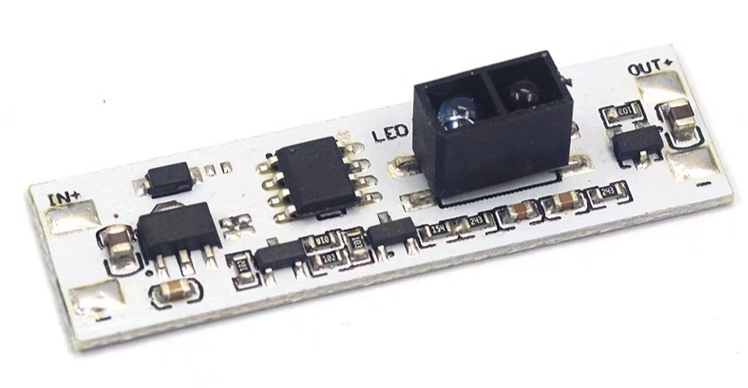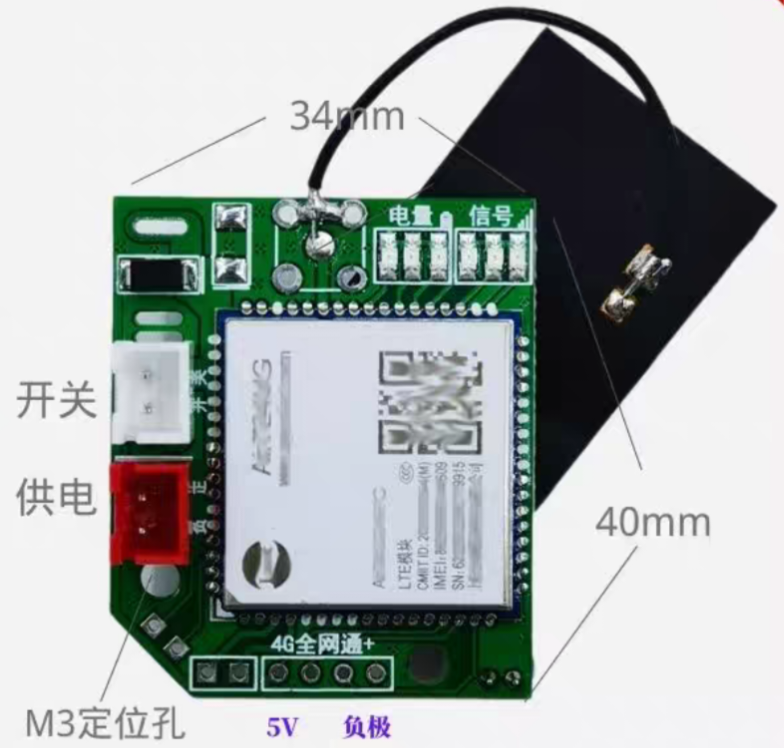Introduction
Mailboxes are essential facilities for receiving mail, typically used for receiving untracked ordinary letters. However, because it requires manual confirmation of whether mail has been deposited into the mailbox, it not only necessitates regular mailbox checks but also fails to ensure timely mail reception. This paper proposes a simple method for detecting letters inside mailboxes based on infrared diffuse reflection, aiming to transform existing mailboxes into “Internet of Things”(IoT) mailboxes with mail detection and reporting capabilities.
The mailbox is mainly divided into four parts: the box body, power supply, sensor, and communication. Among them, the box body is the foundation for loading letters and installing detection facilities; the power supply provides a dry battery installation carrier; the sensor is used to detect whether there are objects inside the box body; and the communication part sends information to the cloud platform via 4G network when the sensor detects an object, thereby notifying the user of the arrival of mail.
Selection of Detection Method
Detection
During the initial design phase, three methods were primarily considered for mailbox detection: video detection, vibration (pressure) detection, and infrared detection.
Although video detection is highly flexible, the need to process large amounts of data increases costs, complicates design, and consumes a significant amount of energy, thus it was initially excluded.
Vibration sensors are easily influenced by external factors, and the short output signal time of the piezoelectric element when mail is deposited makes it difficult to interact effectively with the communication module. Therefore, it is not suitable as the main detection and communication method.
Considering the above considerations, the method of infrared detection was ultimately chosen. Infrared detection has the advantages of low cost, low power consumption, and simple design. It can effectively detect whether there are objects inside the mailbox, making it suitable for the smart transformation of mailboxes.
Infrared Detection Method
The main infrared detection methods are through-beam and diffuse reflection. Through-beam infrared detectors usually consist of two parts: one part is used to emit infrared rays, and the other part is used to detect whether infrared rays are received. Detection is based on whether the receiving end has infrared rays entering to determine if there is an object; diffuse reflection infrared detectors have the emitter and receiver on the same side, detecting whether there is infrared radiation reflected by objects to achieve detection.
During the literature review, cases were found where postal mailboxes used through-beam detection. Through-beam infrared methods have the advantage of long detection distances and are more suitable for covering large volume areas like postboxes. However, through-beam methods require power for both the transmitter and receiver, which may pose wiring difficulties in the limited space of home mailboxes.
Conversely, diffuse reflection detection methods may be more suitable for mailboxes with limited space. Diffuse reflection detection devices only need to be installed on one side of the mailbox, which can better adapt to the limited space of the mailbox and do not require complex wiring inside the box body.
Considering the space limitations and wiring challenges of mailboxes, this paper selects the diffuse reflection infrared detection method as the solution to better adapt to the conditions and requirements of existing mailboxes.
Selection of Infrared Diffuse Reflection Detector Device
According to the requirements, this paper needs to find a device that does not output a signal level in its normal (no diffuse reflection received) state and outputs a signal level when mail is deposited (diffuse reflection received). Based on this, a “Multifunctional Hand-Sweep Induction Switch Module” used to control LED light strip on/off was selected on Taobao.com as the infrared diffuse reflection detection device.

This device has 4 function selection pins, and different functions are achieved by soldering different pins:
| Work Type | Operation Mode | Soldering Position |
| Hand sweep switch | Changes on/off when triggered, current gradually changes | Not soldered |
| Hand sweep switch | Changes on/off when triggered, current changes immediately | AB |
| Block switch | Off when released, on when blocked | CD |
| Block switch | On when released, off when blocked | AB、CD |
To achieve the desired function, we need to solder pins C and D.
Selection of Communication Method
To simplify design complexity and reduce costs, this paper chooses a existing “Cloud Report” platform from Taobao. By purchasing and correctly connecting the device, WeChat, phone, and SMS notification functions can be achieved. You can also use other protocol like LoRa Wan to communicate from device.

The “Cloud Report” device has two triggering modes:
- Conventional power-on trigger version: triggered when the terminal is short-circuited or connected to a high level, needs to be maintained until the reporting process is completed, consumes no power when not reporting, starts immediately when reported, and has a longer delay.
- 1-channel signal trigger version: triggered when the signal terminal and negative pole are shorted, only needs to be maintained for more than 0.5 seconds, consumes power normally, reports quickly, in about 3 seconds.
For the reporting needs of the mailbox, a 3-second delay has little impact. The conventional power-on trigger version can reduce the power consumption of the communication module and improve battery life. In addition, when the terminal is directly short-circuited with a jumper cap, the output end of the infrared diffuse reflection can be directly connected to the power supply of the communication module without additional wiring. Therefore, this paper chooses the conventional power-on trigger version.
Installation of Facilities on the Mailbox

(From left to right: Battery box, Infrared Diffuse Reflection Detector Device, Communication Module)
First, solder the wires according to the situation in the figure, and then use hot melt adhesive to install them on the mailbox body. If the battery box is installed inside the mailbox, for easy battery replacement, the battery cover is not installed on the battery box. At the same time, the film antenna of the communication module is directly attached to the wall of the mailbox, but if the signal is not good, an external antenna can be considered.
According to the test, the AAA battery can only provide a system endurance of less than 2 weeks, so it is considered that a covered AA battery box should be installed outside the mailbox.
Working Principle: When a letter is deposited into the mailbox, it falls to the bottom and causes the infrared radiation to diffuse back to the infrared diffuse reflection device, resulting in the device being conductive. Subsequently, the communication module is powered on, and a signal is sent to the platform. The platform will send relevant information according to the user’s selected method.
During testing, it was found that when the installation height of the infrared diffuse reflection module was too low, the bottom plate might be detected as having an object due to the unevenness of the mailbox. Due to possible differences in the triggering and releasing thresholds of the infrared diffuse reflection module, there may be issues where it can be triggered but not released. Therefore, special attention should be paid to the installation height of the infrared diffuse reflection module, and it is recommended to determine it after sufficient testing.
Testing on the Wall-mounted IoT Mailbox
After completing the basic testing phase, we need to place the mailbox on the wall for further testing. Testing found that due to the mailbox being placed on a white wall, with dim lighting, there was minimal interference from infrared light, resulting in a significant increase in detection distance, and even triggering the communication module when there was no mail. To solve this problem, matte black material was added behind the mailbox to absorb infrared light, and the test was successfully repeated.
Installation of IoT Mailbox
We used expansion screws to fix the mailbox to the wall. When adding light-absorbing material and its thickness is relatively thick, we need to bond the light-absorbing material to the backboard (or in the case of a hollow mailbox, the wall) with adhesive tape. This is done to prevent letters from falling into the light-absorbing material and not being detected.
Conclusion and Prospects
This paper designs a letter detection method for mailboxes based on infrared diffuse reflection, aiming to transform traditional mailboxes into “Internet of Things” mailboxes with mail detection and reporting functions, making it more convenient for users to collect mail. Through the analysis of the design and functions of the mailbox, this paper determines the main components of the mailbox and selects infrared diffuse reflection as the detection solution. Additionally, this paper introduces the installation and testing process of the mailbox and proposes possible problems and solutions.
However, the proposed solution in this paper still has some issues, including but not limited to the lack of waterproof design, inability to handle situations where soft objects get stuck in the middle of the mailbox, which requires further exploration.
This article is original content from this blog. If you have any questions, please feel free to leave a comment.


Recent Comments